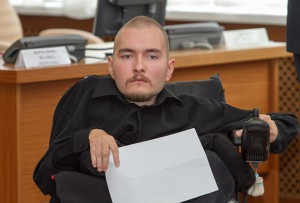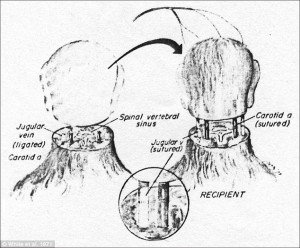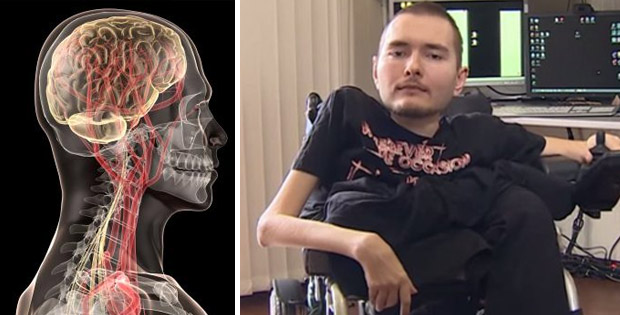World’s First Human Head Transplantation Donor Found
A computer engineer from Russia has volunteered for the world’s first human head transplantation. The search for a volunteer was announced in February 2015 by Italian surgeon Dr. Sergio Canavero from the Turin Advanced Neuromodulation Group (TANG).
The scientist started his project named HEAVEN-GEMINI in July 2013. HEAVEN stands for head anastomosis venture. Since then Dr. Canavero has been preparing for the human head transplantation procedure. He is confident in the possible success of the unique surgery. However, to prove his theory in practice the scientist needed a volunteer who was ready to give his head and, in return ultimately get a new body.
 Surprisingly such a volunteer was found in Russia. A 30-year-old computer engineer from Vladimir city (Russia) contacted the scientist. For the Russian man, Valery Spiridonov, head transplantation is the only hope for a better life. Valery is suffering from a very rare muscle-wasting disorder called Werdnig-Hoffman disease. It was diagnosed by doctors when Valery was at the age of 1. At a certain point, the man’s body stopped developing. Now Valery has a head of a 30-year-old man, and the body of a child.
Surprisingly such a volunteer was found in Russia. A 30-year-old computer engineer from Vladimir city (Russia) contacted the scientist. For the Russian man, Valery Spiridonov, head transplantation is the only hope for a better life. Valery is suffering from a very rare muscle-wasting disorder called Werdnig-Hoffman disease. It was diagnosed by doctors when Valery was at the age of 1. At a certain point, the man’s body stopped developing. Now Valery has a head of a 30-year-old man, and the body of a child.
I can hardly control my body now. I need help every day, every minute. I am now 30 years old, although people rarely live to more than 20 with this disease, Valery Spiridonov says.
HEAVEN-GEMINI project is probably the only chance for the Russian man to live, and to live with a new healthy, well-developed human body. The surgery of head transplantation is planned for the year 2017. Valery’s family support him and hope in Dr. Canavero’s success.
 Meanwhile the doctor explains how the head transplantation will be conducted. It is estimated that surgery will involve 100 surgeons and will last for about 36 hours. The head will be connected with the body of a braindead man by spinal cord fusion. Donor’s head will be detached from its native body with an “ultra-sharp blade” to minimize the possible damage of the spinal cord sustains. To ensure the better fusion of spinal cord with head sustains, Dr. Canavero will use polyethylene glycol or chitosan.
Meanwhile the doctor explains how the head transplantation will be conducted. It is estimated that surgery will involve 100 surgeons and will last for about 36 hours. The head will be connected with the body of a braindead man by spinal cord fusion. Donor’s head will be detached from its native body with an “ultra-sharp blade” to minimize the possible damage of the spinal cord sustains. To ensure the better fusion of spinal cord with head sustains, Dr. Canavero will use polyethylene glycol or chitosan.
When the surgery is over, transplantation procedure will continue. The donor will be kept in coma for three-four weeks. During this time electrical stimulation will be given to the spinal cord by implanted electrodes. This is meant to boost the new nerves connections.
When the patient is returned back to consciousness, he will have to undergo a long-lasting physical therapy. The man with a new body will have to learn how to walk and sit. In brief, he will have to learn controlling his new body. Dr. Canavero sets a period of one year for this.
The doctor, however, is aware of risks and talks about the two key dangers that may await them during the project realisation:
- reconnecting the severed spinal cord;
- immune system of the body can reject the new head.
At the same time, the scientist gives examples of experiments conducted on animals which can be considered relatively successful. There was a case when a head of a monkey was transplanted to a new monkey’s body. The animal remained alive for three days after the surgery. Chinese scientists were more lucky. They could successfully transplant a head of a mouse to another mouse’s body.
 What science is working on, the religion has already explained. The mention of head transplantation can be found in Indian holy book of Ramayana which is the most ancient epic of the world. One of its stories is about a boy Ganesh who had a human body and the head of an elephant. The point is that he was not born like this but became such by an act of “head transplantation”. Ganesh was a son of Shiva and Parvati. By some circumstances Shiva was not aware of this and had to fight the boy. During the fight, he had cut of the boy’s head. Eventually, having discovered the boy was his son, Shiva attached a head of elephant to his killed child and made him alive.
What science is working on, the religion has already explained. The mention of head transplantation can be found in Indian holy book of Ramayana which is the most ancient epic of the world. One of its stories is about a boy Ganesh who had a human body and the head of an elephant. The point is that he was not born like this but became such by an act of “head transplantation”. Ganesh was a son of Shiva and Parvati. By some circumstances Shiva was not aware of this and had to fight the boy. During the fight, he had cut of the boy’s head. Eventually, having discovered the boy was his son, Shiva attached a head of elephant to his killed child and made him alive.

